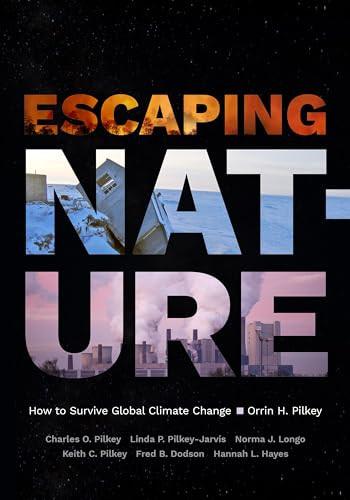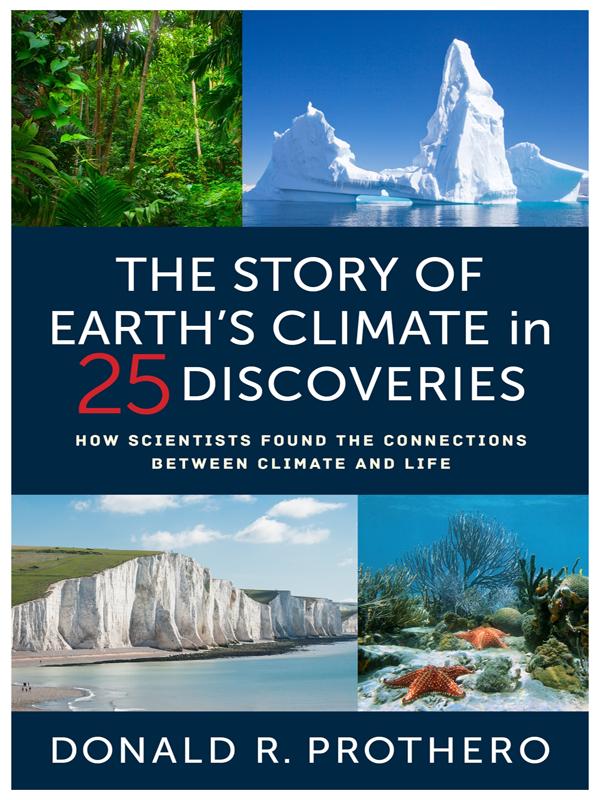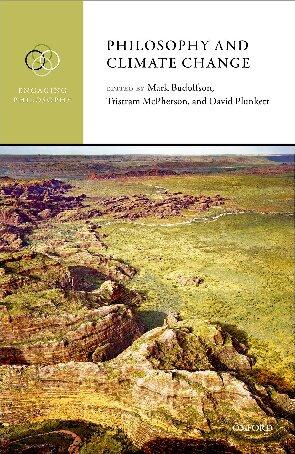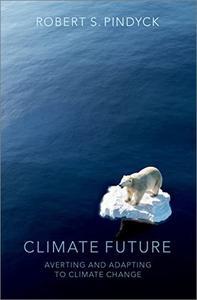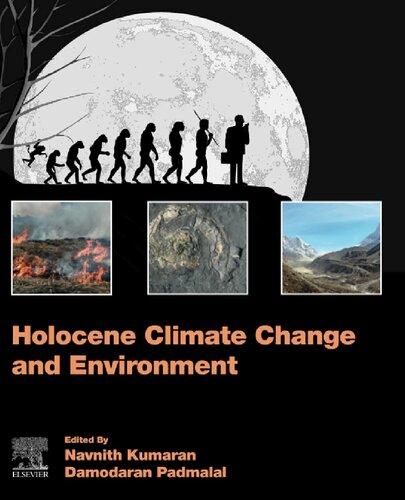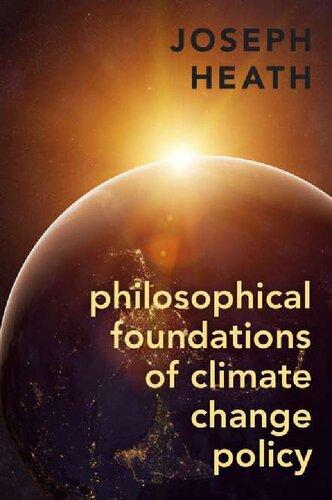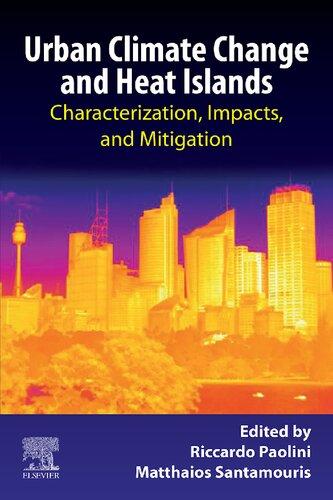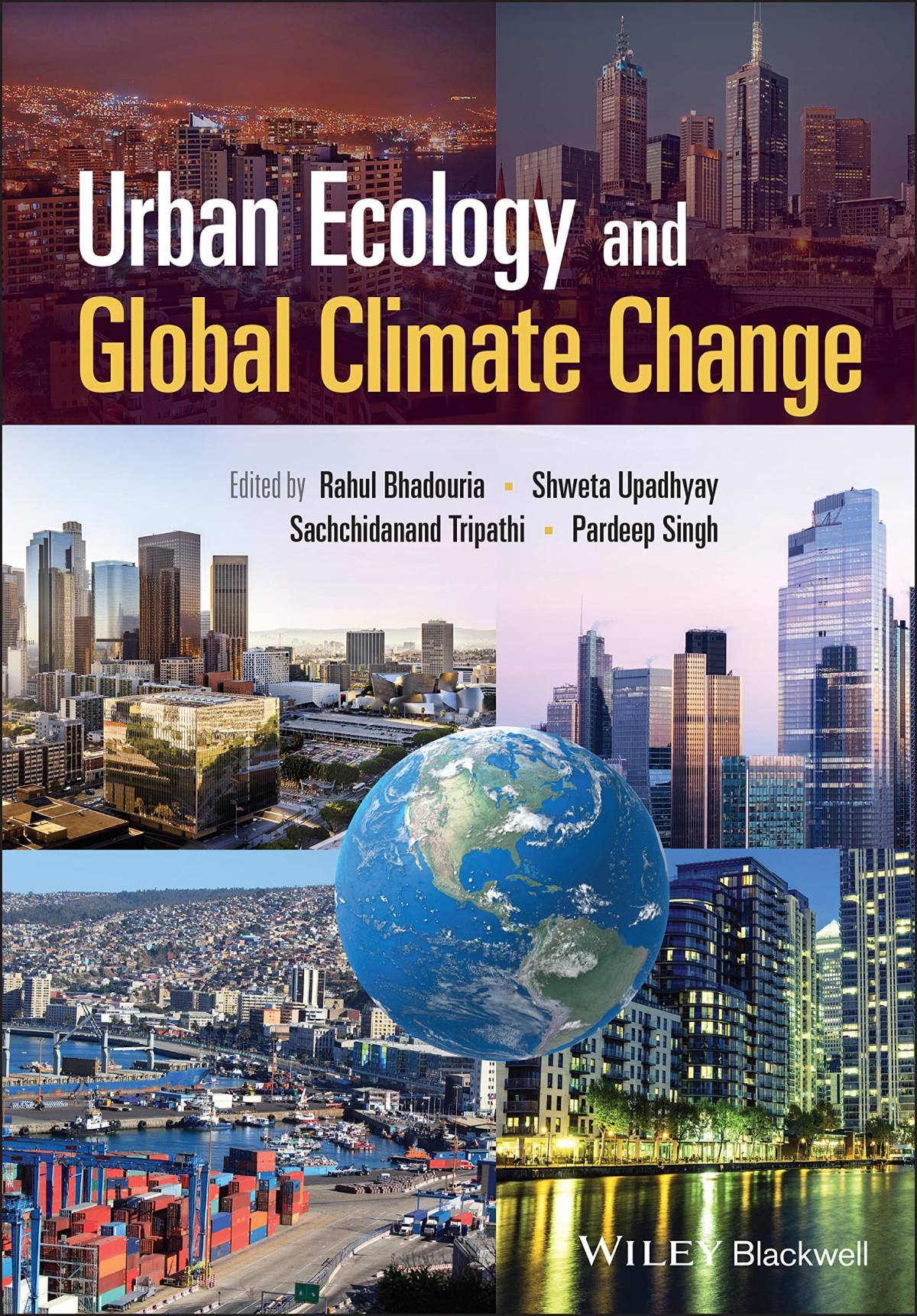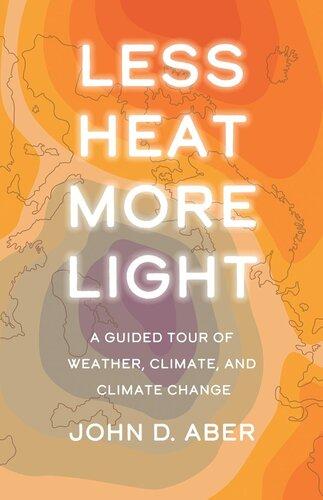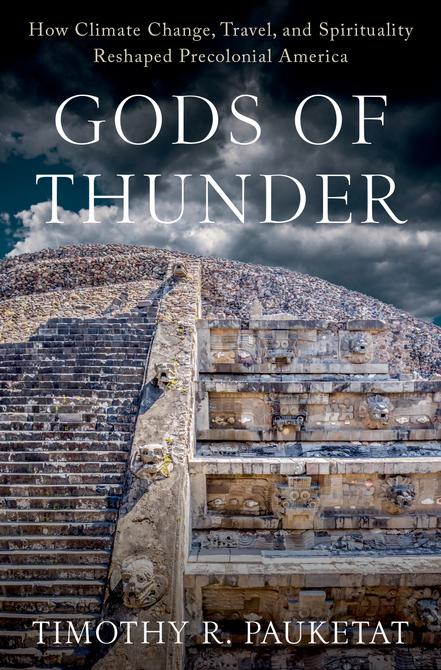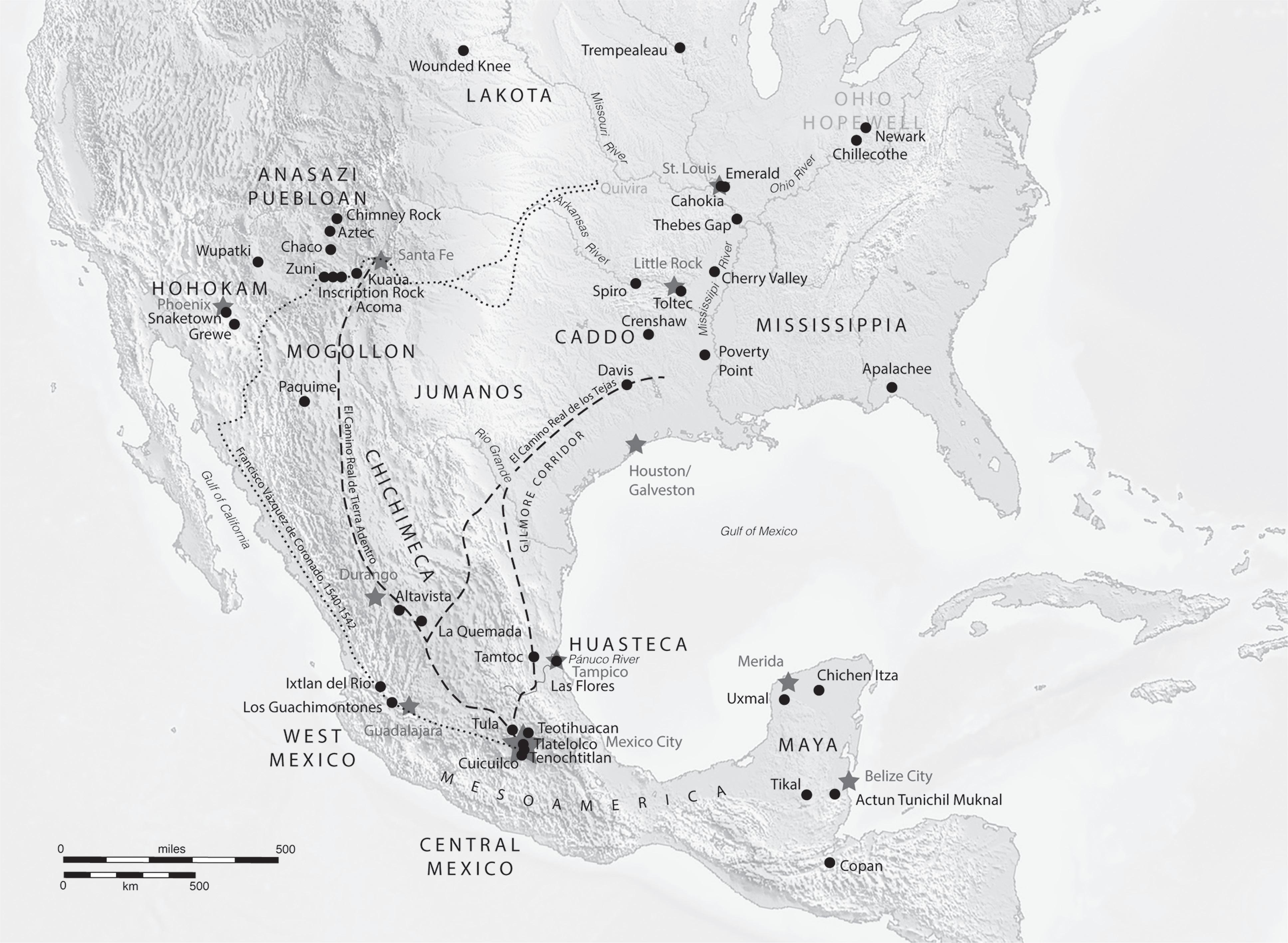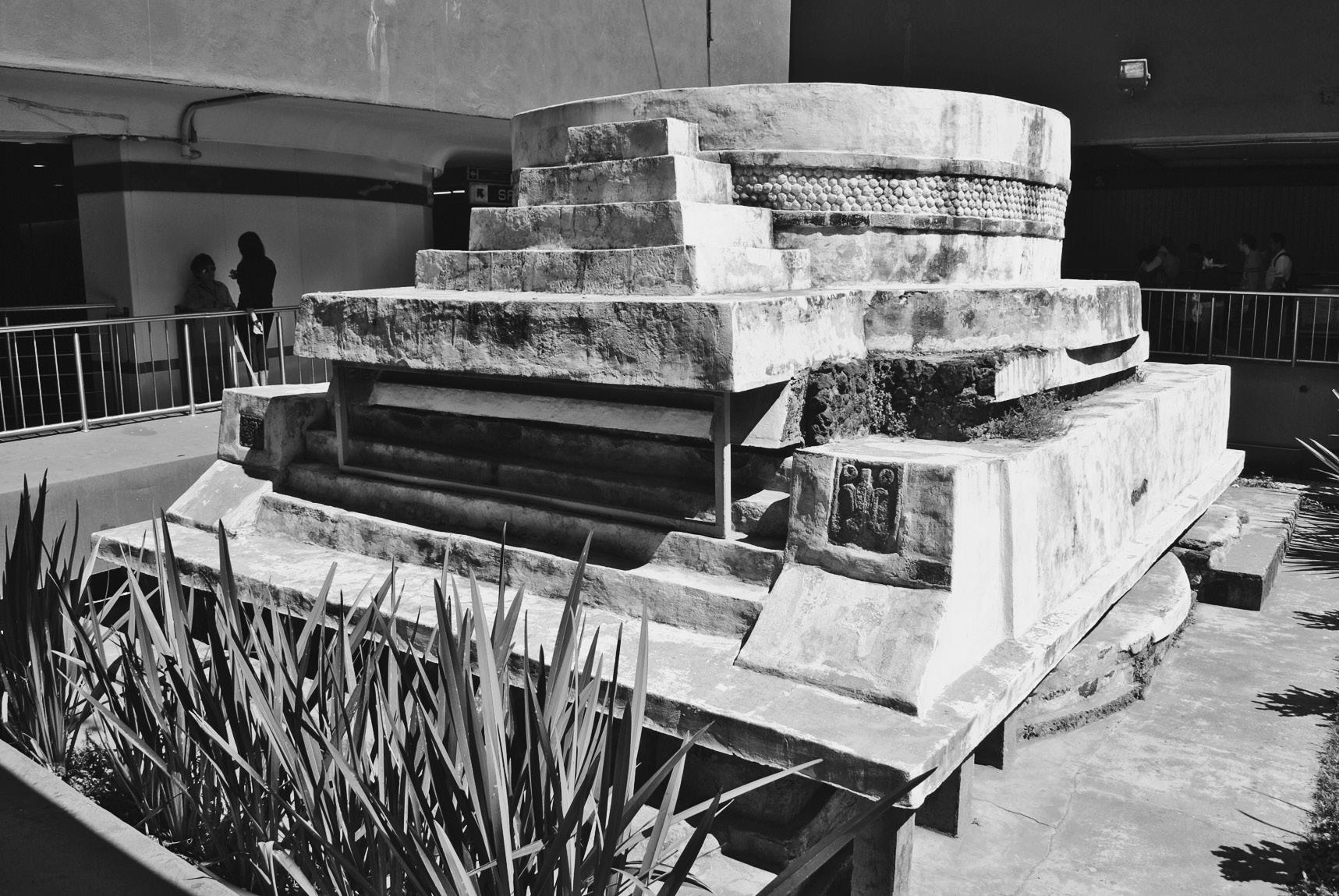Acknowledgments
This book is both a result of my National Endowment for the Humanities fellowship (NEH FA-58536-15 FLLW) in 2015–2016, and a request by Stefan Vranka, executive editor, Oxford University Press, that I write a cross-border history of precontact North America. It is also the second in a two-part history of medieval-era Greater Mesoamerica—a historically amorphous chunk of the continent from the Yucatan Peninsula up through Mexico into the American Southwest and, then, over into the Deep South and up the Mississippi Valley. The first volume was Cahokia: Ancient America’s Great City on the Mississippi (Penguin, 2009). For this second volume, I am grateful both to Stefan and to Jason Boffetti, program officer for NEH, who helped me juggle both the fellowship and a collaborative research grant.
With regard to the NEH research grant, I am also indebted to my co-principal investigators, Drs. Susan Alt, Laura Kozuch and Thomas Emerson. They managed the grant when I wandered off to ancient landscapes and modern universities in Belize, Bolivia, Brazil, Chile, China, England, Guatemala, Mexico, Missouri, Illinois, Arizona, and New Mexico to develop the content for this book. Susan joined me in some of these, and our hosts and friends on those trips include Anna Guengerich, Ross Hassig, Frances Hayashida, John Janusek, Zhichun Jing, Lisa Lucero, Preston Miracle, Eduardo Neves, John Robb, Andrew Roddick, Wolfgang Schüler, Anna Sofaer, Andrés Troncoso, and Rob Weiner. I also thank the Institute of Archaeology at the Chinese Academy of Social Sciences, the Shanghai Archaeology Forum, the Museum of Archaeology and Ethnology at the University of São Paolo, the University of Chile, the Solstice Project, and the
McDonald Institute for Archaeological Research at Cambridge University. For their permissions to reproduce images for this book, I am grateful to the Amerind Foundation, the Emerald Acropolis Project, the Illinois Department of Transportation, the Illinois State Archaeological Survey, the Xibun Archaeological Research Project, and Susan Alt, Pete Bostrom, David Boyle, Tamira Brennan, David Dove, Thomas Emerson, Eric Kaldahl, Brad Koldehoff, Maria Martinez, and Tricia McAnany. The text has benefited from the critical eyes and encouragement of Stefan Vranka, Peter Jimenez, F. Terry Norris, and anonymous reviewers of an earlier version.
Long before the fellowship and travels that gave birth to this book, the ideas herein were gestating as part of a series of scholarly seminars on Indigenous cosmologies in the Americas at the Santa Fe Institute (SFI). These roundtable-style seminars took place in Santa Fe, New Mexico, between 2005 and 2011 and were the brainchild of George Gumerman, with the help of Stephen Lekson, Ben Nelson, Linda Cordell, and myself. Supported by SFI founder and Nobel laureate Murray Gell-Mann and funded by Jerry Murdock and SFI, George made the meetings happen. The insightful Indigenous archaeologist and gentleman scholar Robert L. Hall was at a couple of these meetings, and his studies are referenced often in this book.1
In the 2010s and early 2020s, Steve Lekson, Gerardo Gutierrez, and I again explored ancient Mesoamerican-Southwestern-Mississippian connections via three Crow Canyon Archaeological Center tours and a School for Advanced Research seminar that took place in both the American Southwest and Midwest. The tours were organized by Sarah Payne and David Boyle. They and a series of tour participants— especially Susan Markley—contributed ideas to the discussions that make their way into this book. Phil Tuwaletstiwa took part in one of the Crow Canyon tours and one SFI seminar, and I benefited from his and Judy Tuwaletstiwa’s thoughtful insights and hospitality on several occasions. The SAR seminar was organized by Brenda Todd and Danielle Benden. I thank all of the organizers and participants of each of these events for helping to shape the ideas that end up here.
Of course, the human history upon which this book is based must, in the final analysis, be credited to the hundreds of generations of Indigenous North Americans who lived and died on this, their continent, so that we could ruminate on the deeper meanings of their time on earth. They built the great centers through which the reader will pass, although most will necessarily remain anonymous, as they perhaps were even in their own time.
In the same vein, let us acknowledge the precious materials and phenomena of (and around which Native people built) the centers. Such materials and phenomena were and are alive, so to speak, and helped to give the places herein their vibrancies and legacies. Accordingly, this book must also be credited to the earth, the waters, and the sky above, which deserve our attention and need our help to mitigate the many serious threats posed to them by the worst forces of the modern world.
In my own journey, I have been profoundly affected by several of the places in this book for what they do to the visitor. Go and immerse your being in the dark trickling waters of Actun Tunichil Muknal. Stand amid the breathtaking monuments of Aztec, Cahokia, Carson, Chaco, Chichen Itza, and Teotihuacan. Witness the timeless sweep of Chimney Rock’s horizon. Walk through the intimately stratified history of Cuicuilco, Tenochtitlan, and Tlatelolco. Hear the jungle sounds of Tikal, and feel the earth’s breath at Wupatki. Even in ruins, these places have the power to inspire.
Map showing routes and locations mentioned in text (dots = archaeological sites, stars = modern cities).
Year CE Mesoamerica
Cortés conquers Aztecs
Tenochtitlan founded
Southwest & North Mexico
Coronado expedition Narváez expedition
contraction
Katsina religion
Casa Grande/Grewe
Paquime founded
Salado
Ridge Ruin magician buried
Chaco depopulation
Tri-walls
Ceboruco erupts
Chichen Itza Mexicanized
Las Flores
Tula Grande built
Tikal’s final stelae
Huastec migrations
Maya water shrines
Tikal turmoil begins
Chalchihuites culture
Tula Chico built
Teotihuacan collapses
Timeline of precolonial America
Caddo & Cahokia
De Soto expedition
Spiro’s Great Mortuary
Cahokia depopulated
Cherry Valley complex built
Cahokia’s steam bath ceremonialism terminated Cahokia forti ed
Carson Trempealeau Cahokia’s urban phase: water shrines, poles, daggers
Chaco’s expansion Great kivas Lunar aligned monuments
Migrations
Crenshaw
Maize adopted
Chaco Great House construction begins Migrations Snaketown
Toltec site
Introduction
In Search of Medieval America
Themedieval period of seven to twelve centuries ago is better known in Europe and the Old World. But it was a global phenomenon. It happened in the New World, too. To climatologists, this epoch is known as the Medieval Climate Anomaly or the Medieval Warm Period (800–1300 ce).1 To archaeologists, it was a time of great change, a period when cultural patterns were put into place that lasted into the modern era. This book is a travel guide to that most consequential period of history in North America.
By travel guide, I mean that the book leads you down the same paths walked by Indigenous people a millennium ago and, more recently, the trails trod by Spanish conquistadors just a few centuries ago. By consequential period, I mean one in which climate change helped to alter the course of human history. And by history, I don’t mean the written word. History is never simply recounted through writing. It is a physical narrative written into the earth, moved along by flowing waters and blowing winds, and recorded by anonymous authors through the ruins of shrines, monuments, ceremonial centers, and cities.
North American history includes the lands now partitioned as the United States, Canada, Mexico, Guatemala, Belize, El Salvador, and Honduras. But ignore today’s borders, especially the modern USMexico border. They mattered little to most people before March 2,
1836, when Texas declared its independence from Mexico. The history herein heeds modern political boundaries no more than it does a strict separation of nature and culture.
The chapters that follow will freely cross modern borders and cover a lot of ground. In so doing, this book will provide an explanation of how history unfolded in one particular two- to three-century chunk of time in places that few of us think about today. Knowing how this history happened is possible because archaeology allows a sweeping survey of some remarkable Native civilizations that, we now know, developed alongside each other during the period 800–1300 ce
At the end of each chapter, you’ll be encouraged to think about these parallels in detail by visiting key cultural sites featured in the chapter. As you do, you will also see the evidence for a series of new religions, religious movements, or cults starting in the 800s and extending through the 1000s. These were all part of one big history, one big movement—both literally and figuratively—that saw great journeys, pilgrimages, and migrations.
This big history is, in actuality, even bigger than portrayed in this book, since the Medieval Climate Anomaly was global, with the most dramatic impacts known from the Northern Hemisphere in Europe, Asia, North Africa, and North America. Most readers will already be familiar with the word “medieval” because it denotes a well-known European historical period dating to the second half of the so-called Middle Ages, the period after the collapse of Rome and before the Renaissance. But keep in mind that European medieval cultural history was enabled by global climatic conditions in no way restricted to Europe. And the medieval climatic era itself was a result of centuries of reduced volcanic activity on earth that, in turn, allowed more solar radiation to reach the surface, heating the air and oceans and, from there, producing historically anomalous atmospheric and oceanic circulation patterns.
In northern Europe, the combination led to warming trends that enabled farmers to expand or intensify their production.2 What followed was the age of Vikings, who were able to increase their
agricultural output, grow their populations, and then conduct a series of long-distance raids across seas formerly blocked by ice during northern European winters. The first recorded Viking raid was 793 ce By the mid-800s, Vikings were marauding and colonizing much of northern Europe as far west as Iceland. By the 900s, they had traveled far to the west across the North Atlantic to Greenland and, by the early 1000s, Newfoundland, a feat only possible thanks to warmer sea temperatures. To the east, they reached Kiev in present-day Ukraine, raided along the coasts of the Iberian Peninsula, and sailed into the Mediterranean and Black Seas, one Viking man stopping in Istanbul to etch some runic script onto the floor of the Hagia Sofia.
By 1066, Christianized Viking or Norse descendants in northern France invaded England, just one of several large-scale population shifts that defined European social history during the eleventh and twelfth centuries, all thanks to the Medieval Climate Anomaly. These included Teutonic migrations into the Baltic regions of eastern Europe, an Anglo-Norman migration into Ireland, and German movements into Transylvania. Predictably, climate and migration also laid the foundations for the growth of the late medieval European state, which up to the year 1100 had been weak and feudal. By the beginning of the twelfth century, and at the height of the medieval warming, those formerly feeble governments were able to more reliably gather up the surplus foods and tribute of farmers, converting these resources into manpower and infrastructure to expand control of hinterland zones. Even the European Crusades into Palestine, a great extension of medieval European political-military might, could be understood as indirectly caused by the Medieval Climate Anomaly.3
The Crusades also continued the pattern of great journeys by nobles and their followers similar to the travels of the earlier Vikings.The first Crusade began in 1096 ce and led to the siege of Jerusalem in 1099. Besides this and later religiously motivated military movements, there were many other medieval journeys by princes, scholars, merchants, and would-be elites into distant lands. People traveled in order to learn about the wider world, the ulterior motives almost always being
to legitimate their prestige, authority, or control back home.4 Such people were often celebrated in sagas and stories or commemorated in monuments. The travels of Charlemagne—the so-called father of Europe, as canonized by the pope—helped him expand his realm and found the Carolingian Empire in the late 700s, even while the Vikings were confronting Charlemagne’s soldiers in northern Europe.
European rulers routinely journeyed to Rome or Jerusalem to have their authority affirmed by the pope. Likewise, Islamic sultans and caliphs traveled to Mecca to pay homage to the powers on which their own authority rested. So did medieval Islamic merchants, whose travels to the Indian Ocean helped to spread Islam all the way to Sumatra and the Philippines by the 800s. At the same time, merchants carried Islam along the Silk Road into China, the same road taken by Marco Polo beginning in the 1270s.
The medieval climatic conditions affected other parts of the Old World in ways quite unlike Europe. In Central Asia, the lands became colder and drier, effects that extended into China up until the midtenth century. Likewise, the Nile basin and much of the Sahara of North Africa dried up, with the Nile itself reaching its lowest levels in the late tenth and early eleventh centuries. Meanwhile, the monsoon winds and rains increased in South Asia, supporting the growth of a series of states in medieval India, Thailand, Myanmar, Cambodia, and Vietnam.
The rulers and elites of the South Asian states frequently adopted the Hindu religion, which helped to provide a supernatural basis for their ever-expanding claims to rights, properties, and territories in the eyes of their commoner populations and fellow aristocrats in neighboring provinces. In coastal India, the Chola kingdom expanded into an empire in 848 ce, allowing its statemen and merchants to continue spreading Hinduism into Southeast Asia. There, one Hindu ruler of the Angkor state, named Jayavarman II, had ascended to the status of universal god-king over his domain in Cambodia in 802 ce. He and his successors expanded their domain into an interregional power, the Khmer Empire, the likes of which Southeast Asia had not previously
seen. Its capital city of Angkor, with its well-known Hindu temples such as Angkor Wat and its great reservoirs of water such as Tonle Sap, was by 1150 ce home to more than 700,000 people. Its population rivaled Rome’s during that imperial city’s own heyday.5
The correspondence of dates and events and the prevalence of journeys by rulers, merchants, and proselytizers and the spread of Islam and Hinduism during the medieval era in the Old World makes a compelling case that climate change enabled historical development. The same was true in the New World, where equally profound social changes were occurring. These changes were sometimes realized during pronounced El Niño periods, episodes every three to five years when equatorial waters of the Pacific warmed above average, affecting the weather up and down North and South America’s western coastlines and interior zones. For instance, in South America, the mountainous interiors east of the coasts became drier, possibly contributing to the failure and abandonment of two Middle Horizon cities, Wari and Tiwanaku. Both had been founded in the first half of the first millennium ce, with the cities peaking around the years 500 and 800, respectively. And both were abandoned by 1100.6
In western North America, the drier medieval climate and more pronounced El Niños made human habitation nearly impossible in southern California’s Mojave Desert. To the north, conditions turned less predictable along the coast, and communities found it difficult to rely on the bounty of the ocean, the temperatures of which now fluctuated, particularly during the eleventh and twelfth centuries.7 Consequently, a golden era of shell-mound building around the San Francisco Bay area came to an end.There, coastal mounds propitiously sited along the ocean front every mile or so, each topped with scores of bent-pole houses, were abandoned. Nearby, the Central Valley became drought-stricken. Violence increased, with evidence of scalping, arrow wounds, and forearm fractures indicative of hand-to-hand combat. Inequalities increased, as seen in the treatment of the dead. Increasingly, settlements moved into the interior, at least for part of
the year, onto the foothills of the Sierra Nevada, where acorn gathering remained a viable, peaceful economic pursuit.
Farther north along the Northwest Coast, from Oregon and Washington to Alaska, village size first peaked and then crashed as an indirect result of the Medieval Climate Anomaly, commensurate with climate-induced oscillations of salmon populations. In the 1000s, coastal plank house settlements and interior pithouse villages shrank or even disappeared altogether, rebounding only after the fourteenth century.8
By contrast, the warmer average medieval temperatures even farther to the north, in the Arctic, facilitated the expansion of the ancestors of the modern-day Inuit or Eskimo, known to archaeologists as the Thule. At least some of this expansion was afforded by the Thule’s familial approach to hunting and fishing. Teams of relatives and inlaws pursued bowhead whales across open water in large boats, called umiaks. The open water was itself a function of the warmer temperatures, which melted passages along the northern Canadian coastline that formerly had been frozen shut. After 900 ce, the Thule way of life, if not groups of Thule themselves, moved eastward across the Canadian Arctic.
To the south and east in North America, positive and negative changes are evident as new religions, pilgrimages, migrations, and urban complexes from the Yucatan Peninsula of southern Mexico across Central and North Mexico and into the American Southwest, Mississippi valley, and Southeast. The religions, we will see, were centered around wind and rain gods, all part of one widespread movement not dissimilar to the spread of Christianity, Islam, and Hinduism in the Old World. The most important of the New World gods were variants of one or more Wind-That-Brings-Rain gods. North of the Rio Grande, the Wind-That-Brings-Rain gods were called Thunder Beings or, simply, Thunderers, across the Plains and into the Eastern Woodlands of the continent. Of course, the Native names for these gods were not the same everywhere, which can be confusing. And archaeologists in every region have their own regional designations
for the time periods and cultural developments involved, which can be difficult to sort out.
In the Mississippi valley, this was the era of the Mississippian civilization. In North Mexico and the American Southwest, it encompassed the Pueblo, Hohokam, Mogollon, and early Casas Grandes cultures. In Mesoamerica, which is to say from about Culiacan, Mexico, on the Pacific coast to Tampico, Mexico, on the Gulf Coast and south to Nicaragua, the era encompassed the Epiclassic, Terminal Classic, and early Postclassic periods and included the so-called Toltec, Huastec, and Maya civilizations, among others. Whatever the names, and whoever the people, all appear to have been part of a phenomenon—a cult or cults of Thunderers or Wind-That-Bring-Rain gods—that swept the continent over the course of two to three hundred years.
The effects of this phenomenon were profound, leaving lasting imprints on diverse peoples and their civilizations and establishing ways of life that were to last through the arrival of Europeans. These effects were observed by the earliest European conquistadors and colonists in the 1500s—though they did not recognize the cause—long after the world had moved past the medieval era. Indeed, we base some of what we think happened in the medieval era on later Spanish observations. That said, some of these earliest European intruders make poor guides. They include Hernán Cortés, Francisco Vázquez de Coronado, Hernando de Soto, and Juan de Oñate. These men cared little about the Native history and heritage they were assaulting.
But other European explorers, especially the four men who survived the failed Pánfilo de Narváez expedition of 1528–1536, are quite good guides. These four men, the most notable of whom was Álvar Núñez Cabeza de Vaca, crisscrossed much of the same territory covered in this book, meeting colonial-era descendants of medieval peoples who had caused many of the historic changes that gave shape to the provinces that the Spaniards later called La Florida, Nuevo Galicia, Nuevo España, and the Yucatan.
In the chapters that follow, we return repeatedly to the journeys of one or another of these Spaniards to introduce the ancient Indigenes
in each chapter. Doing so allows the reader to properly gauge what appears to have happened in the earlier medieval era. We will meet a few archaeologists, anthropologists, and other historical characters along the way as well, including the Lakota holy man Black Elk, the English author Charles Dickens, and a series of twentieth- and twenty-first-century scholars.
Chapter 1 points to some intriguing archaeological parallels across the continent, and sets up a framework for understanding how the parallels might have come about. In Chapter 2, we follow the survivors of the Narváez expedition on a journey from modern-day Florida to Mexico City. From there, we begin our primary journey through the archaeological complexes that emerged from the medieval era, moving amid the remains of millennium-old circular pyramids and monumental landscapes and sharpening our understanding of what Black Elk called the “power of circles.” In Chapter 3, we enter the world of the Maya, tacking between the preceding Classic period and the subsequent early colonial era before immersing ourselves in the medieval world in between. In Chapter 4, we move northward into Central Mexico, backtracking via the footsteps of the four survivors of the Pánfilo de Narváez expedition. That chapter begins where the four survivors ended, in the heartland of successive Mesoamerican empires and the birthplace of the Thunderers. After that, in Chapters 5 through 10, we continue up into the borderlands north of Mesoamerica through the realms of the Hohokam, Anasazi, Caddo, Cahokia, and more. The cults of thunder gods and the healing powers of wind and rain here—from North Mexico into the American Southwest, Southern Plains, and middle Mississippi valley—affected human history in dramatic ways. Chapters 11 and 12 tackle the question of why this history unfolded the way that it did.
Admittedly, the human events and climatological processes reconstructed on our journey into the past become a little murky once we get off the beaten paths of written records to follow traces of material culture. It is most definitely true that we don’t and can’t know the names of most who lived and died in ancient North America, and
we don’t and may never know the precise dates for many important, history-changing events. Yet, thanks to a few recent discoveries, we will come close enough to those events to know that we need to significantly revise our general understanding of Indigenous North American history.
The new narrative is about more than people. It includes the stories of wind and water, upright poles, and dagger-wielding, shell-pendantwearing, thundering creator gods. As you will see, archaeological evidence suggests that circular water shrines and their associated gods from Mesoamerica were carried into the north in ways that might even encourage us to rethink humanity itself. What is humanity, and does it change through time? More to the point, how were history, humanity, and climate related?
The tour of precolonial North America you are about to begin will lead you to answer these questions for yourself by tacking between the ancient past, colonial-era conquistadors, and more recent observers and archaeologists. You will see that there were a series of interconnected politico-religious movements or cults of a beneficent Wind-That-Brings-Rain deity and that being’s stormy, diabolical counterpart. These probably first developed two millennia ago near volcanos in particularly thunderstorm-prone regions of Central and West Mexico. Then, in an era of desperation that began around the year 800 ce, the Maya built temples to their own version of the WindThat-Brings-Rain god, who, for its part, was busily converting many more people across North Mexico and Huasteca and, beyond that, the American Southwest, the Plains, and the Mississippi valley.
Such gods were historically linked to one another, much the way that human beings were, and are, intimately entangled in a global evapotranspiration cycle: clouds produce rain and snow that lead to both groundwater and water bodies that relentlessly evaporate, condense in the atmosphere, and appear as clouds once again. The storms that punctuate this cycle are sometimes fearsome. Hurricanes can destroy. Lightning can kill. So can the freezing cold. The Medieval Climate Anomaly only exacerbated such potentialities.
So perhaps it is unsurprising that something profound happened across precolonial America a thousand years ago. The lives of hundreds of thousands of people were pulled into the global whirlpool of the gods. A wave of change washed over the continent, with eddies swirling in spots and water pooling in others. Few of us have thought about the happenings of medieval America in such big-historical and climatic terms. After all, written narratives are rare to nonexistent from the period, and some people might even wonder how archaeologists can know the past without the aid of written words. Happily, history is and has always been material, lived out in the past and strewn on the ground as bits and pieces of things in the present. You’ll see this material along your own walks through the great ruins in this book.You won’t be the first to see and walk through them. A hundred thousand human beings have already left their footprints there. Rodents and insects still root around in them. The rains of fifty thousand thunderstorms have washed over them. Yet our understanding of the big history that they tell us is surprisingly fresh.
1
Temples of Wind and Rain
Quetzalcoatl—he was the wind; he was the guide, the roadsweeper of the rain gods, of the masters of the water, of those who brought rain. And when the wind increased, . . . the dust swirled up, it roared, howled, became dark, blew in all directions; there was lightning; [then it was said that he] . . . grew wrathful.
Fray Bernardino de Sahagún (1540–1585), Franciscan priest and historian1
Youcan see it today when you switch lines in Mexico City at the Pino Suárez metro station; it’s shrouded in leafy greenery in the middle of a semi-subterranean room, open to the sky and the streets above. It’s a small Aztec temple that dates to the 1400s, when the city used to be called Tenochtitlan.2 Before Christopher Columbus landed in Hispaniola, before Pánfilo de Narváez and Álvar Núñez Cabeza de Vaca began their journey into La Florida, and before Hernán Cortés marched into this great urban center, the Aztecs (aka Mexica) built this perfect little stone temple (Figure 1.1).
It is not an ordinary rectangular pyramid to some god or ruler, but a circular platform a little more than 15 feet in diameter and 10 feet high. It once supported a windowless round house of worship with a conical thatched roof. Discovered in 1968 by workers building Mexico City’s metro, the temple was buried 6 feet down in the colonial-era rubble left behind when the Spanish razed and buried the Indigenous city. The workers were instructed to build the odd little platform into Pino Suárez station, rather than remove it.
Figure 1.1. Aztec pyramid of Ehecatl in the Pino Suárez metro station, Mexico City. Wikimedia: ProtoplasmaKid, 2011. Creative Commons Attribution-Share Alike 4.0 International License.
Ancient rectangular steps still lead to its circular summit. Looking around and under its stone base carefully, you see that the circular platform was actually built atop an earlier rectangular base, nearly hidden beneath it. That rectangular base was, you notice, also built atop an even earlier circular base. There may be one or two more circular or rectangular foundations hidden underneath. Here, in other words, was an alternating pairing of squares and circles that reached into the Aztec past, a kind of geometric two-step that danced its way through history as the temple was periodically rededicated to a god and rebuilt in place. The specific god who inhabited this temple was the Aztec god of wind, more precisely the Wind-That-Brings-Rain. The Aztecs knew the god as Ehecatl, sometimes in combination with an old storm god, Quetzalcoatl, as in Ehecatl-Quetzalcoatl. An even larger such temple still stands west of Mexico City at Calixtlahuaca, in the Toluca Valley (Figure 1.2). There are similar temples from the land of the Maya to North Mexico, even in Chaco Canyon in the

American Southwest and Cahokia in the Mississippi valley, testaments to the most important religious movement the Western Hemisphere ever witnessed, at least before Christianity arrived in the colonial era.
Ehecatl, Quetzalcoatl, and the other gods in the ancient American world were not necessarily immutable or static; gods could be celebrated, deemphasized, or even combined with others to create new gods, depending on the forces at work in that particular historical moment. Yet Ehecatl and Quetzalcoatl, separately or in combination, were most definitely powerful primeval spirits, known even more intimately to Central Mexican farmers centuries ago. So, too, was this beneficent spirit’s alter egos or antithetical twins, one of which was a supernatural anthropomorphized canine god of death and lord of the underworld known as Xolotl, shown often as a skeleton with canine features. Another brother or alter ego of Quetzalcoatl, with characteristics that overlapped both with him and with Xolotl, was a dark underworld lord of nighttime winds known as Tezcatlipoca. Sometimes Tezcatlipoca’s name was used in combination with Ehecatl as well: Ehecatl-Tezcatlipoca, the night-wind spirit.
Figure 1.2. Aztec-era pyramid of Ehecatl-Quetzalcoatl, Calixtlahuaca, Toluca Valley, Mexico, view to south. Wikimedia: Gumr51, 2010. Creative Commons Attribution-Share Alike 4.0 International License.

